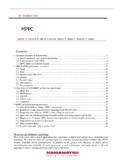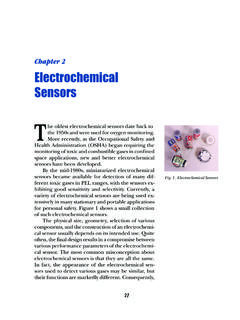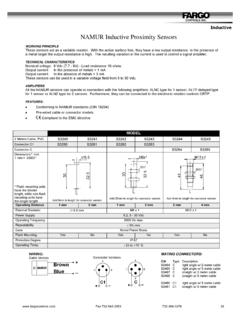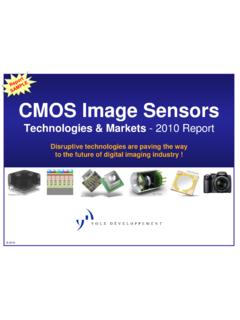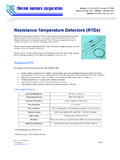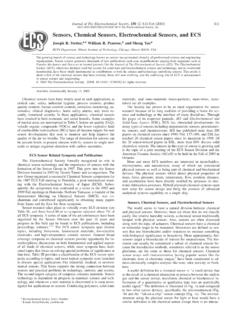Transcription of Image sensors CHAPTER 05 CCD image sensors
1 1 CHAPTER 05 Image sensors1-1 Structure and operating principle1-2 Characteristics1-3 How to use1-4 New approaches1 CCD Image sensors7-1 Features7-2 Structure7-3 Operating principle7-4 Characteristics7-5 How to use7-6 New approaches7 InGaAs linear Image sensors8-1 Features8-2 Structure8-3 Characteristics8-4 New approaches8 InGaAs area Image sensors9-1 DNA sequencers9-2 ICP AES equipment9-3 Optical emission spectrometers9-4 Spectrophotometers9-5 Grain sorters9-6 Optical channel monitors9-7 Security and room access control, obstacle detection, and shape recognition9-8 Detector for prime focus camera of Subaru telescope9-9 Asteroid explorer Hayabusa9 Applications2-1 Features2-2 Structure2-3 Operating principle2-4 Characteristics2-5 How to use2 NMOS linear Image sensors3-1 Features3-2 Operating principle and characteristics3-3 New approaches3 CMOS linear Image sensors4-1 Features4-2 Operating principle and characteristics4-3 New approaches4 CMOS area Image sensors5-1 Features5-2 Structure5-3 Operating principle5-4 Characteristics5-5 How to use5 Distance Image sensors6-1 Features6-2 Structure6-3 Operating principle6-4 Characteristics6-5 How to use6 Photodiode arrays with amplifiers2 Image sensorsFor many years Hamamatsu has developed Image sensors for measurement in
2 Broad wavelength and energy regions from infrared to visible light, to ultraviolet, vacuum ultraviolet, soft X-rays, and hard X-rays. We provide a wide range of Image sensors for diverse applications and meticulously respond to customer needs such as for different window materials, filter combinations, and optical fiber couplings. We also supply driver circuits that are optimized for sensor evaluation or installation in equipment, as well as easy-to-use multichannel detector CCD Image sensors are suitable for low-level light detection because of their high UV sensitivity, high S/N, and wide dynamic range. These sensors are extensively used in scientific and industrial fields such as DNA analysis, spectrophotometry, and semiconductor inspection systems, as well as in the medical CCD Image sensors are used for imaging and measurement in the visible and near infrared region.
3 Their applications have been recently expanded to include high-resolution X-ray imaging by coupling them to an FOP (fiber optic plate) with scintillator for use in medical equipment such as for dental diagnosis and in industrial non-destructive linear Image sensors are suitable for precision spectrophotometry because of their high UV sensitivity and superb Image sensors are well suited for industrial applications that require small, low-cost, and low-power consumption Image sensors . Distance Image sensors are CMOS Image sensors that measure the distance to the target object using the TOF (time-of-flight) method. We also provide photodiode arrays with amplifiers, which have a unique hybrid structure comprised of a photodiode array with a freely changeable pitch and a CMOS amplifier array chip.
4 These photodiode arrays serve as sensors for identifying paper money. When combined with a scintillator, these photodiode arrays are also used for non-destructive X-ray inspection of food and industrial Image sensors consisting of an InGaAs photodiode array and CMOS charge amplifier array are used for near infrared spectrometry, DWDM monitoring, near infrared Image detection, and the also provides flat panel sensors developed for X-ray detection, which combine a scintillator with a large-area CMOS Image sensor made from monocrystalline silicon. (See CHAPTER 9, X-ray detectors. )TypeFeaturesLineupBack-thinned typeCCD linear/area Image sensorImage sensors with high quantum efficiency from the visible region to the vacuum UV region For spectrophotometry For scientific measurements TDI-CCD area Image sensor Fully-depleted area Image sensorFront-illuminated typeCCD linear/area Image sensorImage sensors with low dark current and low noise For spectrophotometry For scientific measurementsNMOS linear Image sensorImage sensors with high UV sensitivity and excellent output linearity suitable for precision photometry Current output type (standard type) Current output type (infrared-enhanced type) Voltage output typeCMOS linear/area Image sensorImage sensors with internal signal processing circuits.
5 These are suitable for applications that require low power consumption and device miniaturization. For spectrophotometry For industrial measurementsDistance linear/area Image sensorSensors that measure the distance to the target object using the TOF method. Used in combination with a pulse modulated light source, these Image sensors output phase difference information when light is emitted and received. Distance linear Image sensor Distance area Image sensorPhotodiode array with amplifierSensors combining a Si photodiode array and a signal processing IC. A long, narrow Image sensor can also be configured by arranging multiple arrays in a row. Long and narrow type For non-destructive inspectionInGaAs linear/area Image sensorImage sensors for near infrared region.
6 Easy handling due to built-in CMOS IC. For near infrared spectrophotometry For DWDM monitor For near infrared Image detectionX-ray Image sensorImage sensor /photodiode arrays capable of acquiring high quality X-ray images when used in combination with an FOS (FOP with scintillator) or phosphor screen CCD/CMOS area Image sensor for X-ray radiography TDI-CCD area Image sensor Photodiode array with amplifier for non-destructive inspectionFlat panel sensorSensors for capturing X-ray images in real time For radiography For X-ray non-destructive inspection Hamamatsu Image sensors3 Energy/spectral range detectable by Image sensors (example) eVInGaAs linear Image sensor (long wavelength type)1 eV10 eV100 eV1 keV10 keV100 nm1 nm10 nm100 nm1 m10 m1 MeVInGaAs linear/area Image sensorNMOS linear Image sensorCMOS linear Image sensorCMOS area Image sensorDistance Image sensorBack-thinned CCDP hoton energyWavelengthFront-illuminated CCDF ront-illuminated CCD (without window)NMOS linear Image sensor (without window)CCD for X-ray imagingBack-thinned CCD (without window)Wavelength [nm] =1240 Photon energy [eV]Flat panel sensor Light level range detectable by Image sensors (example)High sensitivity film (ISO 1000)InGaAs linear Image sensor (G9201/G9211 series)NMOS/CMOS linear Image sensor (S3901/S8377 series)Non-cooled CCD area Image sensor (large saturation charge type S7033 series)Non-cooled type CCD area Image sensor (S9970/S7030 series)Cooled CCD area Image sensor (S9971/S7031 series)
7 Irradiance (W/cm2)Illuminance (lx)KMPDC0105 EHKMPDC0106EC4 CCD Image - 1 Structure and operating principleCCD Image sensors (referred to simply as CCD from now on) are semiconductor devices invented by Willard Boyle and George Smith at the AT&T Bell Laboratories in 1970. CCDs are Image sensors grouped within a family of charge transfer devices (CTD) that transfer charges through the semiconductor by using potential wells. Most current CCDs have a buried channel CCD (BCCD) structure in which the charge transfer channels are embedded inside the shown in Figure 1-1, a CCD potential well is made by supplying one of multiple MOS (metal oxide semiconductor) structure electrodes with a voltage which is different from that supplied to the other electrodes.
8 The signal charge packed in this potential well is sequentially transferred through the semiconductor toward the output section. Because of this, the CCD is also called an analog shift are essentially semiconductor devices through which a signal charge is transferred. Currently, however, the term CCD has come to signify Image sensors and video cameras since CCDs are widely used as Image sensors .[Figure 1-1] CCD basic structure and potential wellP1P2P3 MetalSemiconductorOxide filmChargeDirection of transferPotential CCD typesCurrently used CCDs are grouped by their transfer method into the following five types. FT (frame transfer) type (two dimensional) FFT (full frame transfer) type (two dimensional) IT (interline transfer) type (two dimensional) FIT (frame interline transfer) type (two dimensional) One-dimensional type (linear Image sensor )Types except for the FFT and one-dimensional types are used in general-purpose video cameras.
9 FFT and one-dimensional types are not suitable for use in video cameras because of their operating principle, and are mainly used in measurement and analysis (1) FT typeThe FT type CCD (FT-CCD) is comprised of two vertical shift registers for the photosensitive area and storage section, one horizontal shift register, and an output section. Vertical shift registers are also referred to as parallel registers, while the horizontal shift register is called the serial register or readout register. Transparent electrodes such as made from poly-silicon are generally employed as the electrodes for the photosensitive light comes through transparent electrodes into the CCD semiconductor, photoelectric conversion occurs and a signal charge is generated.
10 This signal charge is collected into the potential well beneath the electrodes during a particular integration time. By utilizing the vertical blanking period, this signal charge is transferred at high speed to the storage section for each frame. Therefore in the FT type, the vertical shift register in the photosensitive area acts as a photoelectric converter device during the integration signal charge in the storage section is transferred to the output section through the horizontal shift register, while photoelectric conversion and signal accumulation take place in the photosensitive area. The signal charge is transferred to the horizontal shift register for each line in the storage section during the horizontal blanking period.





